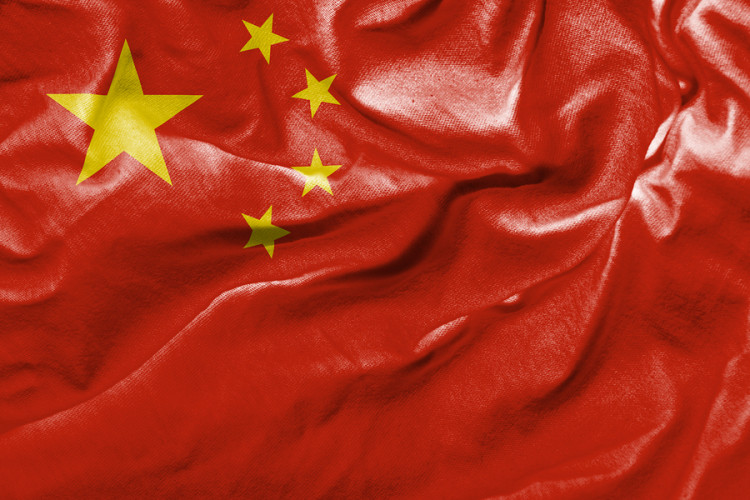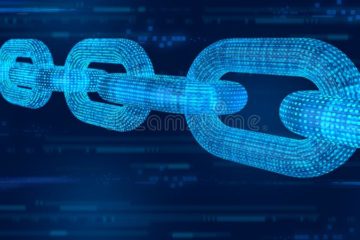REUNIFICATION OF CHINA AND TAIWAN: SIMULATIONS OF A COVID ORIGIN STORY

by William Ludlow April 19, 2023
Was SARS-CoV-2 or a successor virus being developed at the Wuhan Institute of Virology as a vehicle for achieving the strategic aims of the Chinese Communist Party, including the “peaceful” conquest of Taiwan?
By the end of the 2020s, Taiwan has officially become the 24th province of China. Over 80 percent of the Taiwanese population affirmed this peaceful reunification through a nationwide referendum. This outcome fulfills the almost century-long ambition of the Chinese Communist Party (CCP), and its retiring leader, Xi Jinping, is hailed as a modern-day Mao for this breathtaking achievement without bloodshed, economic disruption, or foreign intervention. At the dawn of the 2030s, China supplants America as the world’s largest economy and becomes the preeminent superpower on the planet.
In achieving this stunning outcome, the CCP has peacefully neutralized the security crisis of an emerging Taiwan-US alliance, they have absorbed a vibrant economy that includes one of the world’s essential providers of advanced semi-conductors, and perhaps most importantly, they have eliminated a Chinese model of liberal democracy just 100 miles offshore that threatens the existing autocratic regime with an ideal of freedom and self-determination that effectively competes for popularity and the hearts and minds of the masses on the Chinese mainland.
Strategically, the CCP has avoided a bloody military intervention with devastating consequences worldwide. Had an invasion been used for reunification, the US would most certainly have deployed economic and diplomatic sanctions against China and encouraged its Pacific Rim allies, Japan, South Korea, and others, along with Europe and other friendly nations, to follow suit. China and their allies would have no choice but to respond in kind with their own sanction. The world would be at economic war, interconnected global trade and supply chains would be crippled, financial chaos and ruin would ensue.
Even more catastrophic would have been direct US military intervention in the conflict or indirect intervention by supplying the Taiwanese military with equipment and intelligence to prolong the fighting, which then might have provoked Chinese retaliation in the form of a devastating cyberattack on American infrastructure, potentially escalating the regional conflict into World War III.
As the dust settled from the successful military conquest of Taiwan, China’s worldwide prestige would have collapsed. It becomes isolated diplomatically and economically, and now on its own, faces the daunting task of rebuilding the shattered Taiwanese economy, subduing a now hostile population with more belligerent elements in open rebellion, and weaving these economic, societal, and cultural threads into the fabric of Chinese communism. Reunification with Taiwan would be achieved by sacrificing China’s larger ambition to become a global and comprehensive superpower, the very definition of a pyrrhic victory.
In actuality, peaceful negotiations today are at a standstill and only a single-digit minority of the Taiwanese people favor reunification with China. How, then, might the Chinese have achieved this great success after peaceful reunification negotiations had failed and without the devastation wrought by forced reunification via bloody military intervention?
In this simulation, a deadly and highly contagious respiratory virus emerges on Taiwan a few years before the advent of peaceful reunification. The contagion incapacitates selected Taiwanese civilian institutions and military defenses, almost as though these critical segments of society were targeted for infection. The population is locked down, hospitals are overrun, the economy is shuttered, panic ensues, and the world fears another deadly pandemic migrating off the island.
Almost as quickly as the virus emerges, the Chinese People’s Liberation Army (PLA) springs into action with a contingency plan that appears to have been in place and practiced for years. The PLA launches a series of amphibious and arbitrary maneuvers that deploy large numbers of troops and military personnel on the island that cannot be repelled by Taiwanese defense forces incapacitated by the virus.
Simultaneously, the PLA Navy forms a blockade around the island, preventing other countries from intervening. Transit to or off the island is prohibited. The immediate objective of this intervention is to stabilize the country, provide humanitarian aid, and prevent the spread of contagion to population centers in mainland China and eventually around the world. The UN, the World Health Organization, and other international bodies praise China for its courageous efforts at great risk to contain a deadly pathogen and address an emerging humanitarian crisis on the now isolated island.
During the stabilization phase of the crisis, a massive Chinese humanitarian effort begins to care for the sick and hungry, and to provide essential services to the locked down populace. In addition, the PLA takes control of Taiwanese civilian, military, mass media, and communication apparatuses. The Internet is disabled on the island.
Within weeks of the intervention, the PLA discovers the source of the contagion, a virus with gain-of-function attributes that accidentally escaped containment from a secret laboratory under the Taiwanese government’s control. The Chinese foreign ministry presents documents recovered by the PLA at the lab and at other civilian and military locations that shape the story that the virus was engineered as a bioweapon to be used on the Chinese mainland in response to a cyberattack or other provocation against Taiwan and as a doomsday device to be used as a last resort against the invading PLA forces. It is reported that other laboratories and bioweapon programs have been discovered. The Chinese Foreign Ministry assures the world that these dangerous activities illegally undertaken by the Taiwan government have been terminated.
The Taiwanese people and the rest of the world are outraged by these findings, which have effectively established Taiwan as a rogue nation violating international treaties banning bioweapons. Many high-ranking and once highly regarded members of the Taiwanese government and military are implicated in this bioweapon’s development program and cover-up. The newly formed Taiwanese security force under control of the PLA, arrest these former officials, charging them with crimes against the Taiwanese people. They are imprisoned and effectively silenced.
After a few months, with the PLA firmly in control of the island, scientists in China announce the development of a vaccine against the virus. A program to vaccinate the entire Taiwanese population against the virus is implemented over 18 months. Eventually, the lockdown eases, the economy recovers, the humanitarian crisis subsides, and life on the island returns to a new normal. The outcome is a model of triumphant Chinese communism.
Now, with the former Taiwanese government in disrepute and its leaders in prison, the allies of the CCP in Taiwan call for a referendum on reunification with China. A country-wide vote is held under the administrative authority of the PLA. The tabulated results indicate that an overwhelming majority of the Taiwanese people, grateful to China for saving them from this catastrophe, endorse immediate reunification. Within months, the PLA withdraws but leaves behind a substantial presence on the newly reunified island. The new era of Taiwan as a province in China has begun.
The breakneck pace of this simulation in addressing and effectively resolving a crisis with momentous implications leaves many unanswered questions, including:
- How did international monitoring bodies miss a bioweapons program of such magnitude in an open society such as Taiwan?
- Why did the viral leak appear to have been directed at disrupting critical elements of the civilian and military apparatus, undermining an effective rapid response?
- Why did the PLA soldiers who initially occupied the island, followed by the personnel sent there to address the humanitarian crisis, appear to already have immunity to the virus?
- How did Chinese scientists develop and manufacture an effective vaccine in large quantities within such a short period?
- If Taiwan had an extensive bioweapons program, did the PLA terminate or merely transfer assets to mainland labs?
Questions 1 and 5 are circumstantial for the simulation. In an alternative simulation questions 2 through 4 pose questions as to how a targeted contagion might achieve the objective of peaceful reunification that elevates the identity and enhances the prestige of the CCP and its leaders on the world stage. Most importantly, it poses the most serious question, which is how a SARS-CoV-2-like virus or COVID-19 as we came to call it, or a successor of it, could be used to meet these strategic ends of an autocratic regime.
In this alternative simulation, the virus that emerged on Taiwan did not originate from a secret Taiwanese lab developing bioweapons but rather from a lab in China. The virus was engineered with gain-of-function attributes to be initially deadly and contagious, as seen in the first wave, but within weeks, lose its virulence. This optimized COVID-like virus spreads rapidly and incapacitates the group initially exposed to it but then fails to migrate and inflict widespread morbidity and mortality on the larger population. This creates a manufactured crisis the requires immediate intervention but in actuality causes limited damage.
Such a circumstance would generate the false appearance of a deadly virus with “pandemic-like” consequences, deceptively creating fear, panic, and isolation. Alarming news of the emerging situation on the island being consumed by the populace and the rest of the world is shaped and tightly managed by the CCP and the PLA now in control of Taiwanese communication channels, including the Internet and social media.
How, then, might such a bioweapon have been effectively delivered against its targets, civilian and military leadership, and other critical personnel essential to the island’s first-line defense? CCP agents infiltrating the highest levels of Taiwanese civilian, military, and economic apparatuses would expose critical Taiwanese leaders and personnel to the virus. Agents targeting delivery of the bioweapon are not on a suicide mission because they have received a vaccine already proven to be effective against the engineered contagion because it was developed in tandem with the virus.
As the crisis unfolds and the intervention begins much like in the first simulation, PLA soldiers and humanitarian personnel rushing to aid Taiwanese victims are also vaccinated, ensuring that these first responders have immunity to the virus, and if exposed to it, will not only avert incapacitating sickness but also avoid becoming a spreader of the disease. In this scenario, there are already substantial vaccine doses secretly stockpiled on the mainland at the time the crisis emerges.
As in the previous simulation, a few months after the stabilization of the country, China announces the successful development of an effective vaccine that they are manufacturing for distribution. However, given the engineered viral attributes of limited long-term virulence and susceptibility beyond the initial infection, the vaccine would merely create the appearance of resolving what is actually a manufactured crisis, the definition of a false flag operation. The introduction of the vaccine also creates the appearance that the Chinese are on the leading edge of science and medicine and can rapidly discover, design, and develop breakthrough innovations.
Vaccine roll-out, distribution, and delivery to inoculate the now isolated and panicked Taiwanese population, buys the time required for the CCP and PLA to establish complete control of the Taiwanese civilian, military, and economic apparatuses without opposition, installing their surrogates and agents in key leadership positions. After the population is vaccinated and the immediate crisis subsides, a referendum on reunification is placed on the ballot. Then, either through genuine popular demand or by the CCP and PLA manipulating by illegitimate means, the vote on reunification passes overwhelmingly.
The COVID origin story may have two parts. The first part is answering the question as to whether the virus emerged by either natural spillover, although curiously it has not yet been found in nature, or accidently from a lab near the location of the outbreak, the Wuhan Institute of Virology (WIV), where the CCP and PLA were interested parties. If the virus is man-made, then the answer to the second part of the question is even more important to answer, which is how such a contagion might be used, either conventionally, as in a true battlefield-based bioweapon, or unconventionally, as proposed in these simulations.
If the SARS-CoV-2 virus or a successor was intended to provide a non-negotiated, non-military option to the conquest of Taiwan and its reunification with China, then the simulations described above are plausible. In addition, one would also wonder whether the accidental leak of COVID from the WIV prematurely foiled these plans for the future use of the virus or even more diabolically, whether the lessons learned from the societal and economic disruptions and human suffering and loss of life from the recent pandemic might be used to greater effect by the CCP sometime in the future to achieve its longer-term strategic objectives as outlined in these hypothetical simulations.
Novice writer of fiction and commentary looking for an audience, feedback, and publication.







No Comment